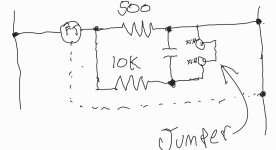Hi all,
I’m an electrician with limited knowledge of PLC circuits.
Typically I will see simple 2/3/4 wire terminations for transmitters on electrical drawings where the 4-20ma signal goes through a resistor and then the PLC analog input.
Recently I have been getting drawings where the input circuit is more complicated involving multiple resistors and capacitors. My first impression was that it was converting the 4-20ma to a voltage but I just doesn’t make sense to me what the benefit of that would be.
I have attached a couple of photos of the drawings of these circuits.
If someone could point me in the right direction of what I should be reading up on that would be great.
Cheers,
Thomas
I’m an electrician with limited knowledge of PLC circuits.
Typically I will see simple 2/3/4 wire terminations for transmitters on electrical drawings where the 4-20ma signal goes through a resistor and then the PLC analog input.
Recently I have been getting drawings where the input circuit is more complicated involving multiple resistors and capacitors. My first impression was that it was converting the 4-20ma to a voltage but I just doesn’t make sense to me what the benefit of that would be.
I have attached a couple of photos of the drawings of these circuits.
If someone could point me in the right direction of what I should be reading up on that would be great.
Cheers,
Thomas





